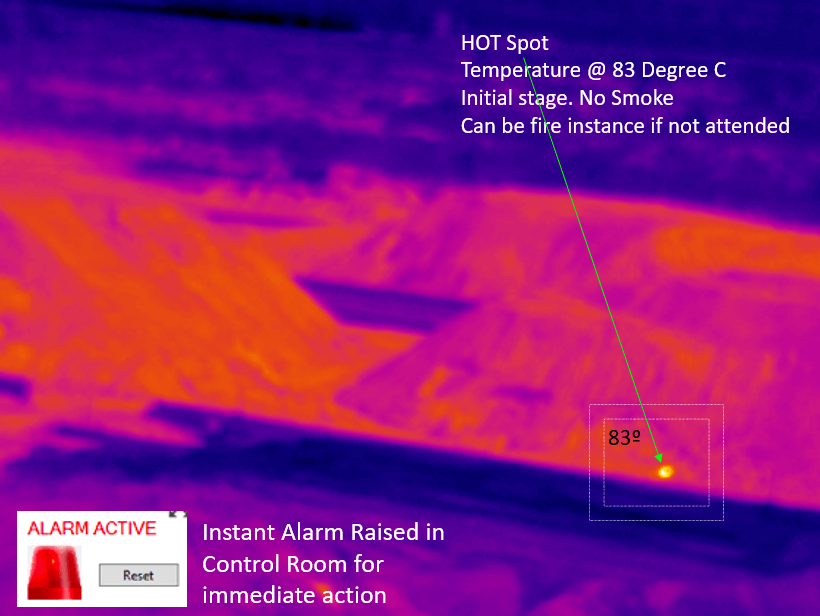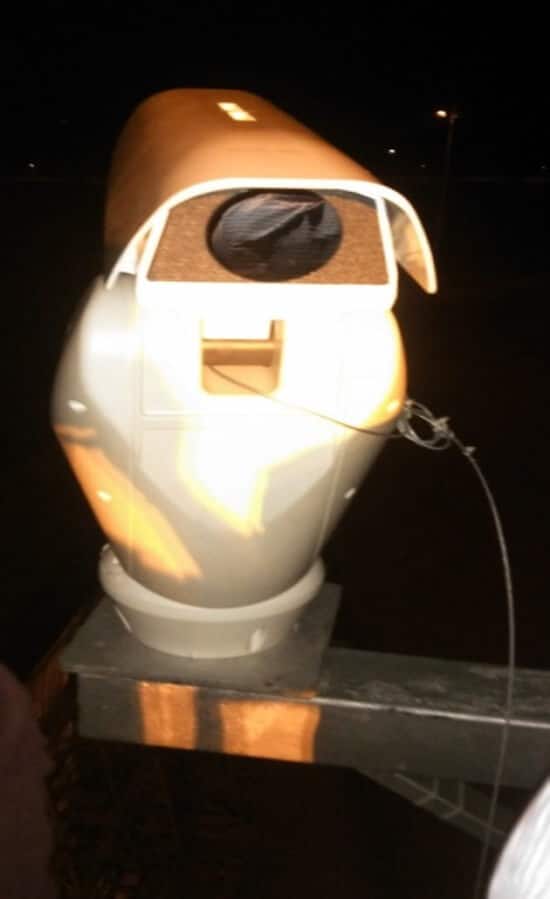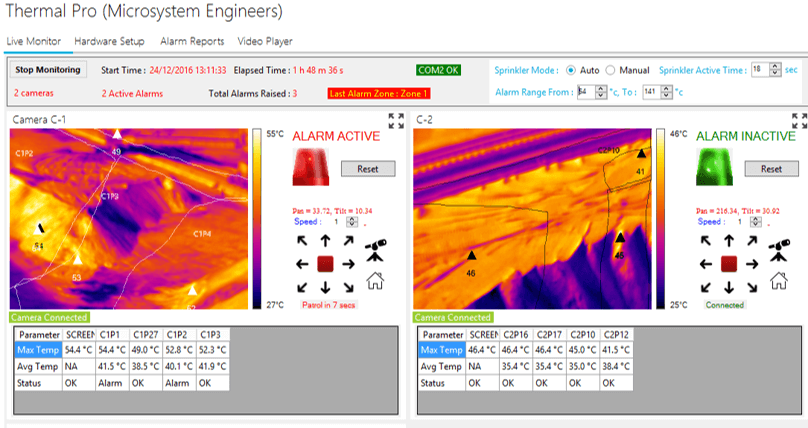Coal Stockpile Temperature Monitoring for Spontaneous Combustion
Coal Stockpile Spontaneous Combustion
Unwanted fires are common occurrences when storing coal for extended periods. This may be problematic when stockpiling waste/spoil materials that contain large quantities of coal.How Does Spontaneous Combustion Occur?
Coal naturally becomes brittle over time due to the process of oxidation. As it oxidizes, exothermic (heat-releasing) reactions begin to occur within the coal itself. These reactions are accelerated by the addition of further heat from sources such as sunlight, wind, or even other natural processes.Due to the risk of spontaneous heating and combustion of coal piles, it is recommended that you follow industry guidelines for safe management of storage piles, including recommendations for pile angles, compression, surface smoothing, and hot and cold spot continuous monitoring.

Factors Influencing Spontaneous Ignition of Coal
The spontaneous combustion of coal is dependent on two key factors:- Intrinsic factors (seam and geological factors) and
- Extrinsic factors (mining factor).
The Geological factors which impact coal mining include seam thickness, seam gradient, coal burst, geothermal gradient and other geological conditions such as the depth of cover over the seam mined, coal foaminess (quickly crumbling into tiny pieces), underlying faults, and other surrounding strata factors.
Mining conditions and mining methods are considered to be the most important factors that affect the spontaneous combustion of coal. In addition, airflow, pillar and roof conditions, re-mining in abandoned areas, types of machines and materials (crushed pillars due to overburden, etc.) also affect the flammability of coal.
Risks Associated with Spontaneous Combustion of Coal Pile
Besides the obvious risk of being a fire hazard and being hard to extinguish once established, the following risks are realized:- Harmful greenhouse gases are emitted (S02, NOx, H2S, CO)
- Fine particles will be emitted as a result of the combustion
- Harmful/Toxic air pollutants
- Odors that can travel via wind
- Hazard to the general public, waste/spoil piles can cause scrub fires
- Long-term problems such as soil contamination, rehabilitation in the case of spoil/waste piles
- Fines and restrictions
Coal Pile Spontaneous Combustion Prevention
Mitigating factors responsible for the prevention of spontaneous combustion in coal:- Proper selection of particle size distribution. If the stockpile is of mainly medium to fine particles, then making it finer will help.
- Avoid segregation by eliminating improper stacking.
- Proper attention must be given to the preparation and maintenance of the stockpile.
- Proper compaction. Air circulation within the stockpile should be restricted.
- Moisture contributes to spontaneous combustion as it aids in the oxidation process.
- Dimension of the stockpile is critically important. Just dumping coal in a big pile might lead to problems.
- Use of a protective covering can help cut off oxygen coming in contact with the coal.
Monitoring Coal Pile for Early Spontaneous Combustion

FLIR thermal camera snapshot of actual installation
Early detection is critical in preventing spontaneous combustion. The first stage of spontaneous combustion is accumulating enough heat to ignite. With the use of a FLIR thermal camera, one can spot potential problems with their stockpile or equipment before it actually starts burning. FLIR thermal camera takes the guesswork out of fire detection and prevention when used from a safe distance at which time you’ll be able to see and avoid spontaneous fires.
Agile Microsys offers a FLIR Online Thermal Imaging Camera mounted on a Pan and Tilt arrangement to continuously scan the entire coal yard for any hot spots and give an early warning before a fire erupts. The output of the Online Thermal Imager can be accessed via a mobile or on-site device, allowing users to access information regarding site safety and thermal updates 24/7. The application uses a FLIR thermal camera to scan the coal yard and provides an early warning of any hot spots. The system also provides instant notifications via SMS, email, or admin panel audio/visual alarm regarding any areas at risk of spontaneous combustion.

Graphical User Interface overview of Live Monitoring of Coal pile site
The location of hotspots can be easily tapped upon using the coordinates provided through this software. The System can generate analog alarms that can be interrogated with the water sprinkler system and also allows for a containment team to analyze and compile resources to come up with a plan that will minimize any problems regarding coal stockpile spontaneous combustion through effective detection and prevention, which is one of the best ways to minimize downtime. Having this system on-site working 24/7 enables early detection and prevention and provides means of detecting hotspots in stockpiles before they cause dramatic damage.
